Utility meets fashion in our new Kantha chore Jacket
At Indigowares, we’re on a mission to bring meaning back to your closet one meticulously crafted garment at a time. Our latest handcrafted chore jacket does exactly this, with a timeless design that has carefully considered sustainability every step of the way. We’re celebrating the launch of this easy to wear jacket by telling you the complete story of its journey to your closet.
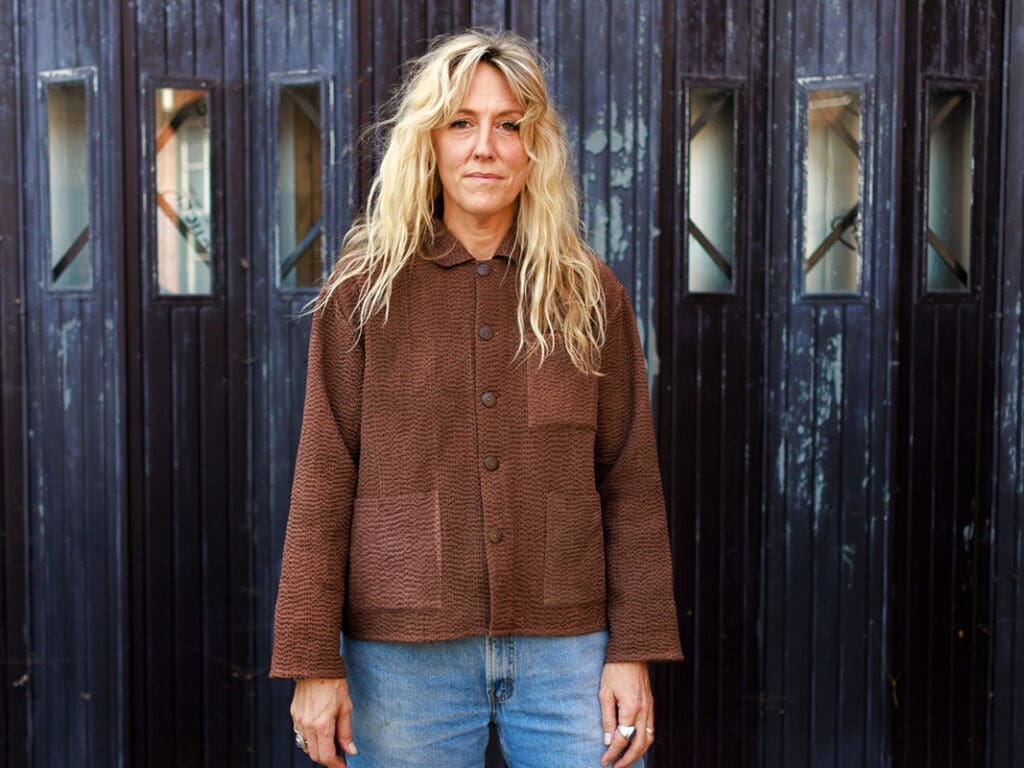
Kantha Chore Jacket: A perfect combination
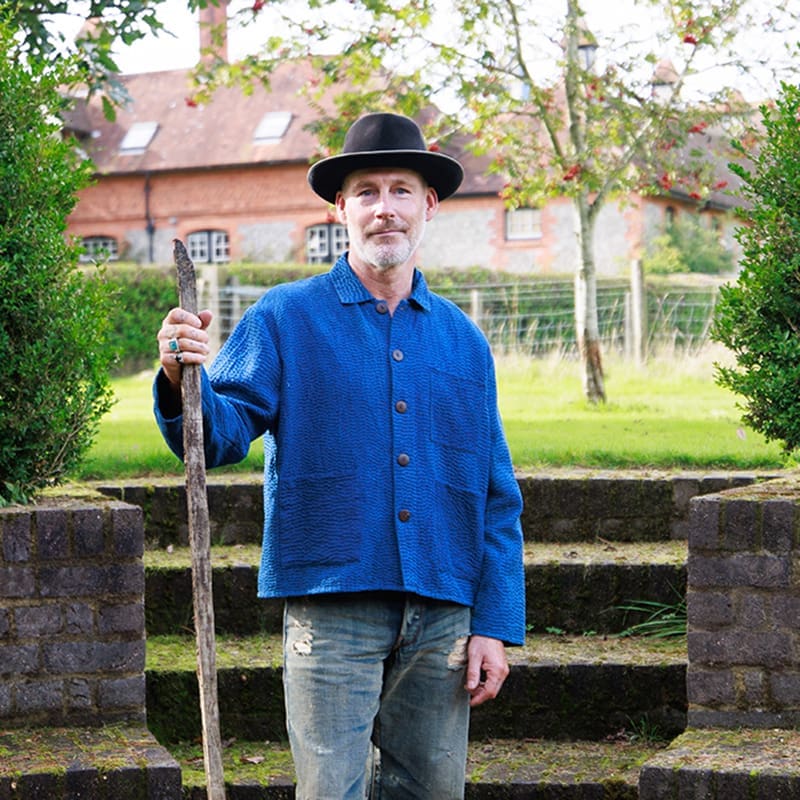

I’ve always gravitated to chore jackets because they are the ultimate year-round staple: they can be a liner jacket or house coat in winter and then a throw-on jacket in summer. They’re a bit like a denim jacket, with an extra level of comfort and a touch of minimalist utility.
A garment that takes you through the seasons is a truly sustainable buy, as you’re bound to get a lot of use out of it. This is why I’ve wanted to create a combination of detailed and delicate kantha stitching and the classic utility of a chore jacket for a long time. What better harmony than a durable hand stitched fabric with a versatile layer for all seasons?
This is our fourth jacket created with our friends and artisans at the Tarai Blue Indigo Farm. With each garment created, we have learned and improved on our methods of sustainable production. Put it all together, and we honour the rich heritage of kantha stitching, marvel at the skilled craftsmanship of the Tarai Blue team, and infuse it all with the classic minimalism of the chore jacket.
We will go into more detail about how this eco friendly jacket is made, but first, a bit of history…




Where does the Chore Jacket come from?
Turn back the clock to 19th-century France, where the chore jacket known as ‘bleu de travail’ made its first appearance. This translates to ‘work blues’ – which really lines up with the indigo chore jacket that we’ve had on our minds, doesn’t it?! Born out of necessity more than fashion, these sturdy garments were made from durable fabrics like cotton drill or moleskin, and dyed with a distinctive indigo hue.


These were more than just garments; chore jackets were essential tools for workers. Their roomy pockets stashed tools, reinforced shoulder patches protected against wear and tear, and the loose fit allowed for effortless movement.
Popularity started spreading as chore jacket crossed the Atlantic, finding a new home in America. These jackets became synonymous with American railroad workers, mechanics, and anyone who valued function over frills. American workwear giants like Carhartt and Levi’s took inspiration from the bleu de travail as well, and crafted their own iterations. Think sturdy denim jackets and the iconic duck canvas chore coat, often in a utilitarian brown – a great inspiration for Indigowares’ brown chore jacket overdyed with natural cutch.
Like any enduring style, the Chore Jacket started making its way from function to fashion as its reach spread around the world. In the 1950s and 60s, it found its way into the wardrobes of cultural icons like Marlon Brando and James Dean, who wore the chore jacket as a sign of rebellious spirit and effortless cool. The style began to evolve into a symbol of counterculture and individuality, which brings us to the present day.


Chore jackets sit in a modern wardrobe like a best friend – in fact, it’s that friend that you would envy for being able to fit in anywhere! The chore jacket can dress any outfit up or down. It feels as appropriate on a casual workday as it does an effortless night out. From the fields to the runways, the chore jacket remains a testament to the enduring power of functionality and timeless design.
Its popularity is no surprise; in a world where convenience reigns supreme, the chore jacket offers a perfect balance of form and function. But beyond its practicality, the chore jacket represents something more profound: a shift towards enduring mindful consumption and sustainable fashion.




Our take on the chore jacket
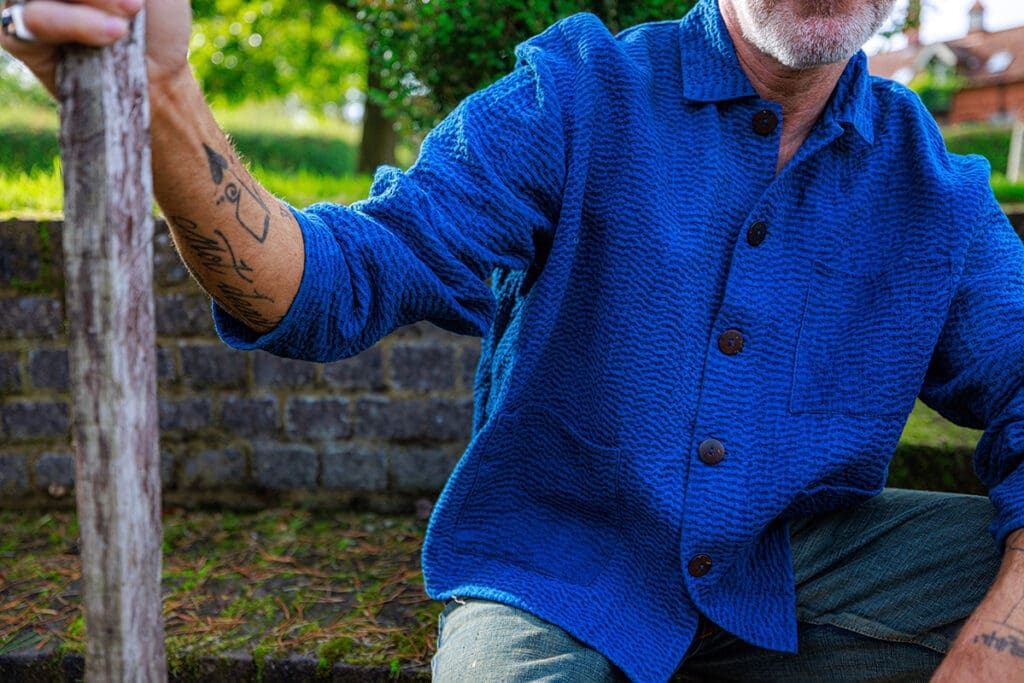

When we set out to make our Seed to Closet Chore Jacket, we had all of your requests for more unisex styles in mind. After all, the style is the perfect unisex jacket, with a straight and streamline fit it suits all different bodies. In the tradition of workwear, the chore jacket is less about gender and more about what the coat does – in this case, act as a stylish, convenient staple. I’d take a guess that most of us reading this are not French labourers… but we are busy people that like a convenient and versatile jacket. The more pockets to keep a phone, wallet, keys, and essentials on hand, the easier it is to be on the go.
The chore jacket is also the ideal eco-friendly style, as it is both fashion forward and an enduring trend, making it likely to be a favourite for decades to come. After all, the longer you wear your clothes, the less likely you are to impact the environment with excess production.
Crafting naturally dyed kantha stitched cotton
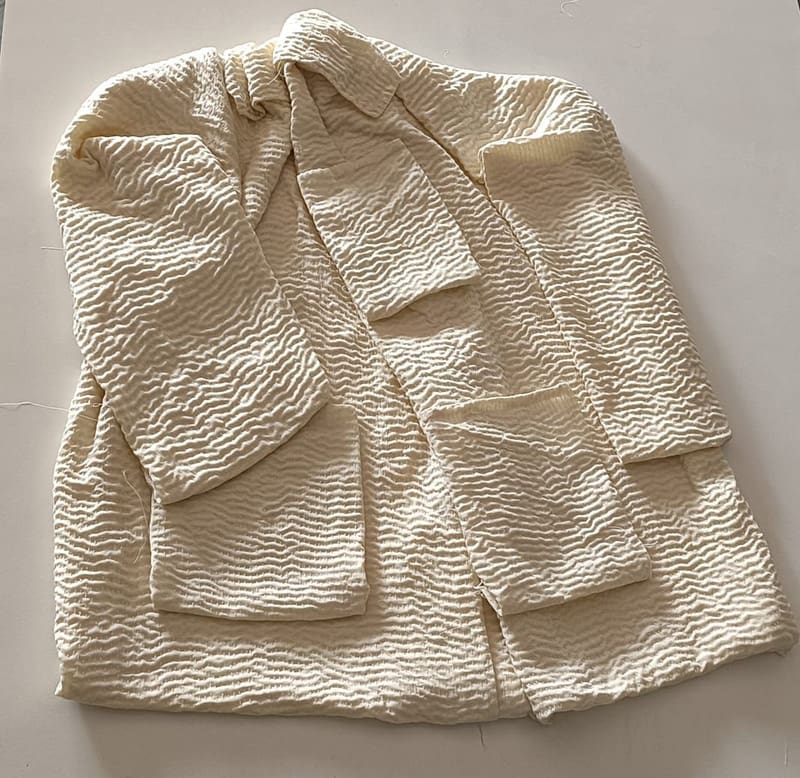

The Kantha Chore Jacket will be our 4th Tarai Blue jacket collaboration, stitched and dyed by the makers at Tarai Blue Farm. Click here if you’d like to read more about Tarai Blue Farm and its founder Kiran Sandhu. With the help of the amazingly skilled team at Tarai Blue, we have developed a kantha stitched cotton that we can build upon with our favourite natural dyes.
To make the type of fabric that is used for our chore jacket, the cotton is first scoured –which means to be cleaned for dyeing – dried, then laid out in front of the embroiderer. This is usually on the floor of the workroom, giving the embroiderer a bird’s eye view of the work that comes next. Rough straight guidelines are then chalked onto the fabric, followed by running stitches across its entirety.
We learn and use more efficient and eco friendly methods with every jacket made with Tarai Blue. The very specific and considered way that the embroiderer completes this process is a great example of this: we now know that by cutting the rough shape of the jacket first, the embroiderer then knows exactly how much area she has to cover. This saves time and prevents stitching excess fabric.




Natural dyes used on your chore jacket


Once the pieces have had their stitches applied, the newly stitched fabric is taken to the dye vats, soaked in water to open up the fibres and then dyed. This can take a few days depending on the depth of shade we trying to achieve. Our kantha chore jacket has been made in three different colourways – a rich blue dyed with 12 dips of natural indigo, a natural dip dyed indigo with beautiful tonal shifts, and an earth toned brown dyed with natural cutch dye.


The indigo natural dye process:
A quick look around our blog at Indigowares will teach you that the beautiful blue indigo is actually created from a green plant.
The process of harvesting and extracting an indigo plant to create a dye that is ready to use requires high levels of skill and knowledge, in many cases gained over different generations of family. You can read more about it here.
When it comes to dyeing with indigo cakes, there are many different processes and traditions that can be called upon. For instance, japanese shibori techniques – which you may recognise as a type of tie dye – is a very popular pattern to create with indigo. For our chore jacket, we have created a single, rich blue hue with 12 dips of indigo.
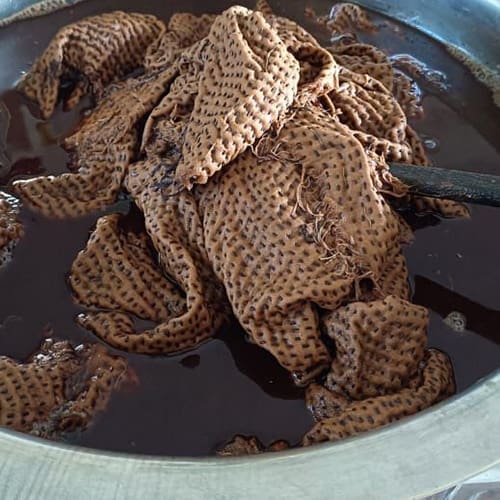

The cutch natural dye process:
Cutch dye – or Acacia catechu – is made from an extract, created when the wood of the Acacia catechu tree is steeped in hot water until a syrupy liquid results. This liquid is then dried and ground into a powder, that is used to dye the very chore jacket that lands in your closet.
Cutch creates rich, earthy tones that age gracefully over time. The tones that you can achieve with this dye vary in a similar way to indigo, which means that many dips and rotations of the dye process will have been used to get the results you see on your jacket. This is one of the reasons the art of cutch dyeing takes so much skill – the dyer works in harmony with an understanding of how to build colour and achieve the tones they imagine.
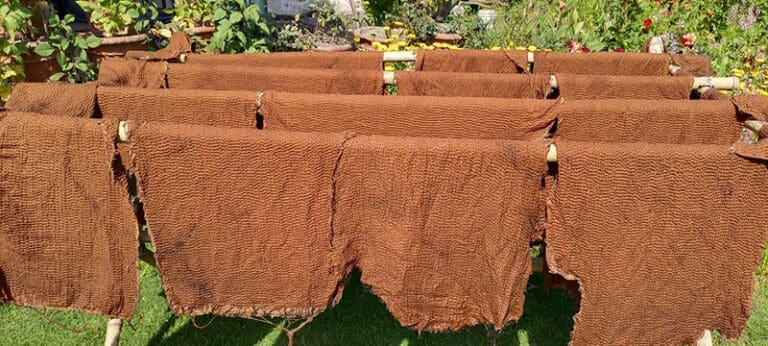

After all of the stitching and dyeing is set and done, the kantha fabric is washed, rinsed and dried to be then pressed and passed onto the tailors, who will stitch it together to construct the jacket itself.
The final touches add sustainability and longevity: all the seams are bound so that they withstand wear, and the chunky coconut husk buttons are sewn on for that final eco friendly touch.


And just like that, the chore jacket has made its way through history and culture, countless craftspeople and purposes, all the way to our hands and your closet today. We hope this becomes your new favourite 💙
-

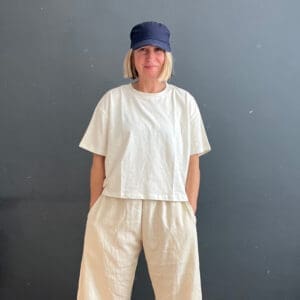
Boxy T Shirt – Un-dyed hemp Cotton Blend
£49.00 Select options This product has multiple variants. The options may be chosen on the product page -


Boxy T Shirt – Hand dyed hemp cotton blend
£55.00 Select options This product has multiple variants. The options may be chosen on the product page -

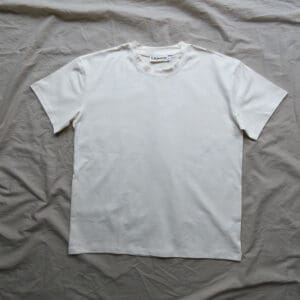
Un-dyed Unisex T Shirt – Hemp cotton blend
£49.00 Select options This product has multiple variants. The options may be chosen on the product page
